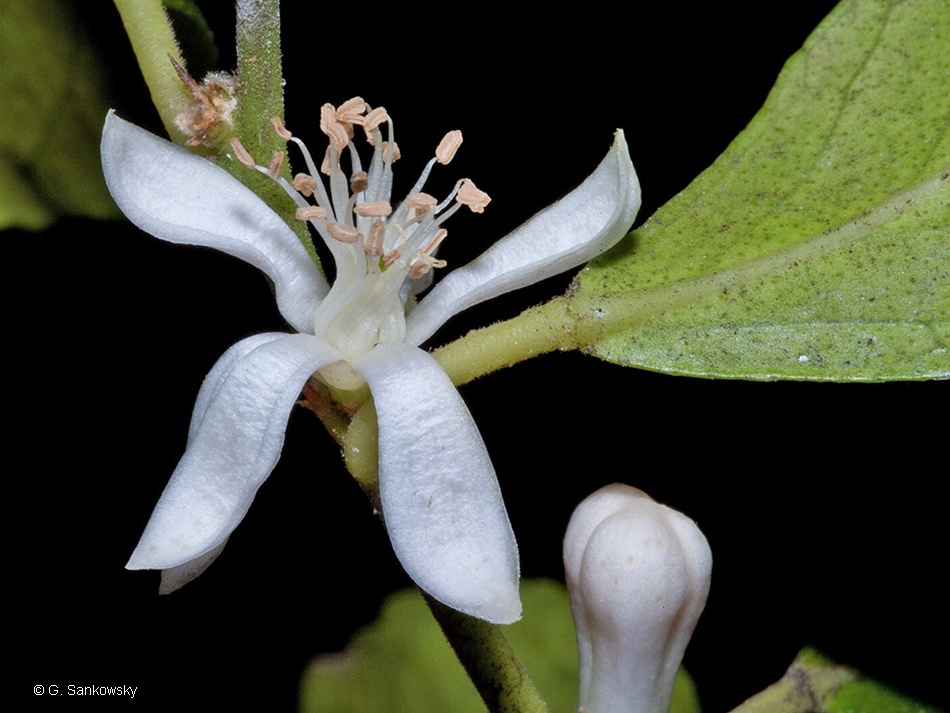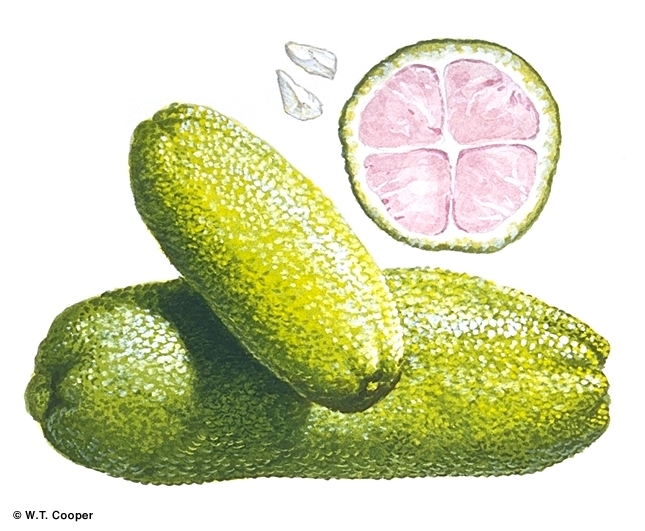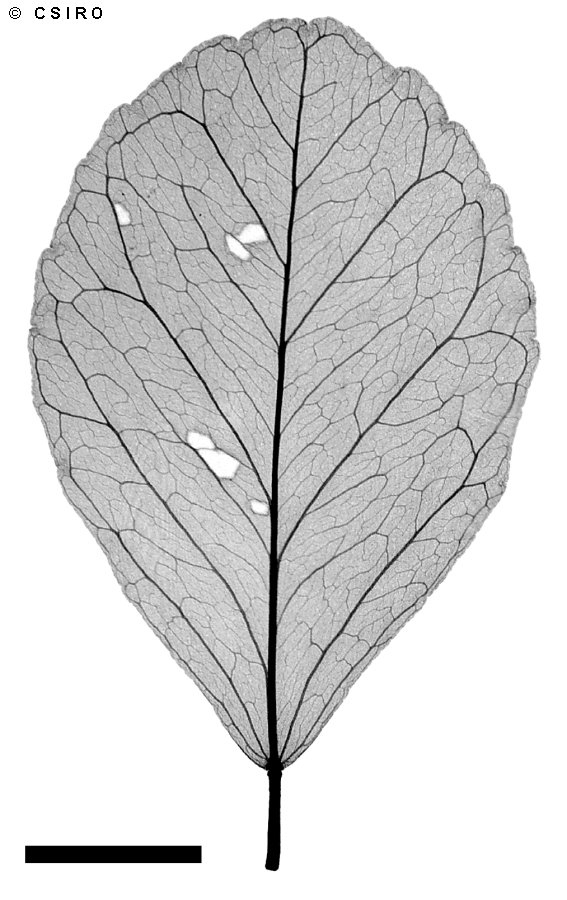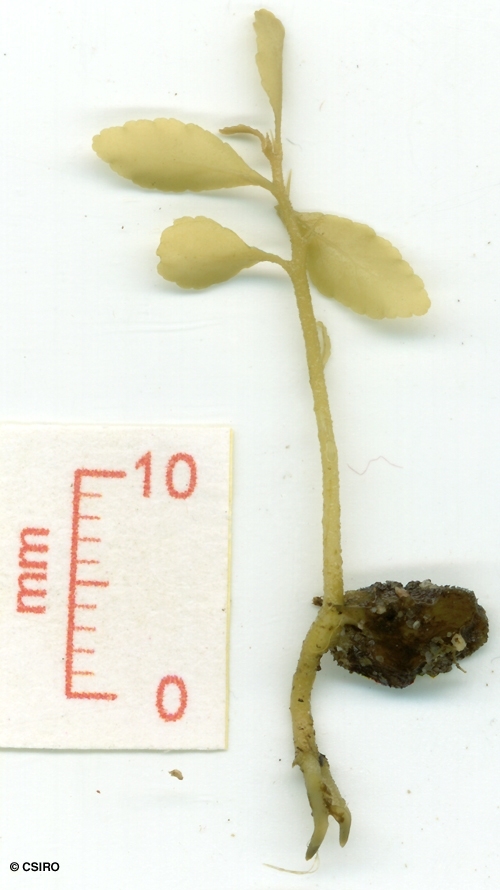Australian Tropical Rainforest Plants - Online edition
Citrus garrawayi F.M.Bailey






Bailey, F.M. (1905) Queensland Agricultural Journal 15: 491. Type: Summit of Mount White, Cape York Peninsula, altitude about 1,300 ft., R.W. Garraway, May 1904.
Mount White Lime
Seldom exceeding 30 cm dbh. Lenticels about 10 cm long, narrow. Darker fibrous stripes and pale, granular stripes in the outer blaze. Blaze finely layered.
Fruits +/- cylindrical, 7-10 x 2.5-3.5 cm. Surface rugose from large oil glands below the epidermis. Juice vesicles hard and tough, much harder and tougher than cultivated citrus (Citrus spp.) varieties.
A few cataphylls are produced before the first true leaves. First true leaves obovate, margins crenate, oil dots readily visible with a lens. At the tenth leaf stage: leaf blade obovate, margin crenate in the apical half, glabrous; oil dots numerous, just or almost visible to the naked eye; a single thorn present in the axil of each leaf. Seed germination time 18 to 37 days.
Occurs in CYP and NEQ, just extending into the northern part of NEQ. Altitudinal range from 50-450 m. Grows in monsoon forest and on rain forest margins. Also occurs in New Guinea.





